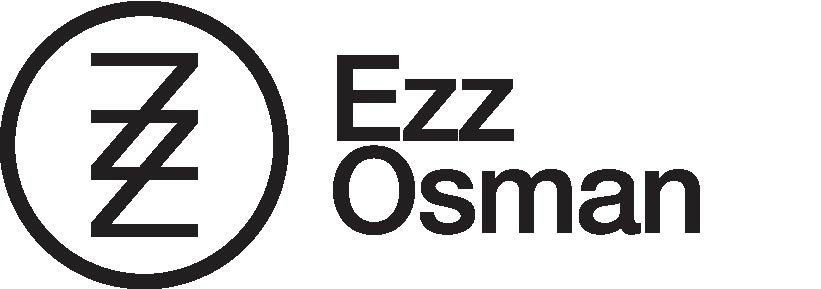Motivation, significance, and purpose of research:
In the growing digital era, with the world in our hands, we barely go to physical libraries or museums, but we still do, at least some of us. This research will monitor recent physical museum experiences for individuals. Analyzing the motivation for the visit, expectations, and problems during the visit, also, issues need to be fulfilled during, before and after the visit. Monitoring the percentage of physical museums visitors who extended their physical visit with a virtual online one through the museum website or social media pages, and how the virtual tour was useful –if there was one– also did it work in harmony to be an extended part of the physical experience or not, and how engaging and interactive was the virtual experience along with the physical one. Understanding all that will help us open doors to know some of the weak and strength points in physical museums experiences that need to be taken care of through a better exhibition and museum design, as it will help us understand how important the online experience as an extended knowledge resource and reference.The study will be based on interview questions around 20 minutes each person, group age between 18 and 40 from all over the world with different experiences and backgrounds but interested in visiting museums, or at least visited 3 different museums in the last 10 years.
Pre-insights:
Museums theoretically are classified as follows:
-Museums as schools: Museums as a source of education and continuous learning in a direct or an indirect way.
(Field of study, kids education, research, work, exploring, area of interest, curiosity) And this experience could be replaceable somehow, or could be supported online through the museum website that supports all the information of the artifacts supported with new learning techniques.
(Field of study, kids education, research, work, exploring, area of interest, curiosity) And this experience could be replaceable somehow, or could be supported online through the museum website that supports all the information of the artifacts supported with new learning techniques.
That’s the trend most of the museums follow now which is called (Edutainment), Education through entertainment, interactivity and engagement.
-Museums as temples: Culture, Entertainment & Amusement.
Museums as a source of recognizing a culture, displaying rare artifacts, have it’s own holiness, a place of entertainment and amusement. This experience is hard to be replaced because it depends on many factors, for example, the holiness of the original rare artifacts, the physical place and the interactivity with the objects, the architecture, the interior and the phenomena of the place that may support in a way or another the artifacts theme. The senses of the physical place including touch, smell, feel, hear and sometimes taste, last but not least the consciousness of scale and textures. All these factors and more are very hard with existing technologies to adopt it in an online visit.
Museums as a source of recognizing a culture, displaying rare artifacts, have it’s own holiness, a place of entertainment and amusement. This experience is hard to be replaced because it depends on many factors, for example, the holiness of the original rare artifacts, the physical place and the interactivity with the objects, the architecture, the interior and the phenomena of the place that may support in a way or another the artifacts theme. The senses of the physical place including touch, smell, feel, hear and sometimes taste, last but not least the consciousness of scale and textures. All these factors and more are very hard with existing technologies to adopt it in an online visit.
Although a lot of designers are trying to mimic this experience with simulated virtual tours, but it still requires higher qualities tools and more technologies to even get closer.
Design Opportunities:
1-Creating online platforms / databases for museums that may help researchers, students and professionals achieve their educational goal.Such platforms will include full technical and historical data of all artifacts in participating museums.
2- Include interactive and engaging design elements to museums’ websites to motivate the visitors.That will help make the online experience as a supportive tool for the physical one.
3- Follow “Edutainment” trend in designing physical museums and exhibitions.
To make education through the physical experience more engaging and interactive.
To make education through the physical experience more engaging and interactive.
Prototype conceptual visualization:
Today's technology could help keeping the balance between different personas preferences in physical museums’ experiences through creating a customizable experience for each persona.
Today's technology could help keeping the balance between different personas preferences in physical museums’ experiences through creating a customizable experience for each persona.
Creating an online database for a museum with an advanced mobile application could help maintain the balance between researching, learning, exploring, or playing. Customizing your visit through your, age, purpose of visit, personality and interests will help you see, explore and learn what you really need in an effective way.
The audience could easily control the balance they need between education and entertainment, also, they could switch mode easily.
Test Reflections:
The first test conducted was measuring the first impression of the application, What do you think the application would do for you? And How would you describe the first impression of the application in keywords?
There were three main tasks given to test, first is act like a researcher visiting the museum and trying to use the application, second, a tourist, third, as a child.
Also, the test evaluated the hierarchy, affordance, feedback and navigation of the initial prototype application. Are information and interface well organized, directing you to easily discover the key features?, Does each interface provide proper visual affordance for intended user interaction?
Does each interface provide proper responses to your interactions? Is it clearly indicated where you are and where else you can move to?
The test was conducted for 6 users, around 15 minutes each person.
Reflections:
-Users preferred to create a profile only once at the beginning of the application of one journey.
-They mentioned if a group or a family is at the museum, is selecting a group or solo could be an option?
-They wondered if each person in the group with different interests having the same time frame for the visitor a different time frame.
-Users suggested that checkpoints on application to be more reliable as you go, as also you can see explore, research or play on each checkpoint instead of switching to a totally different mode.
-Some users preferred to link groups or especially family members accounts together from the beginning of the journey to make sure not to lose the kids throughout the journey.
A second test conducted after applying modifications based on the first test and reflections were much better.
Main new reflections were based on the look and feel and the actual design of the application which wasn’t set yet as final yet for the prototype.
Suggesting adding some navigational buttons (back, forwards, arrows, and indications of location). which will be applied to final prototype proposal.
The first test conducted was measuring the first impression of the application, What do you think the application would do for you? And How would you describe the first impression of the application in keywords?
There were three main tasks given to test, first is act like a researcher visiting the museum and trying to use the application, second, a tourist, third, as a child.
Also, the test evaluated the hierarchy, affordance, feedback and navigation of the initial prototype application. Are information and interface well organized, directing you to easily discover the key features?, Does each interface provide proper visual affordance for intended user interaction?
Does each interface provide proper responses to your interactions? Is it clearly indicated where you are and where else you can move to?
The test was conducted for 6 users, around 15 minutes each person.
Reflections:
-Users preferred to create a profile only once at the beginning of the application of one journey.
-They mentioned if a group or a family is at the museum, is selecting a group or solo could be an option?
-They wondered if each person in the group with different interests having the same time frame for the visitor a different time frame.
-Users suggested that checkpoints on application to be more reliable as you go, as also you can see explore, research or play on each checkpoint instead of switching to a totally different mode.
-Some users preferred to link groups or especially family members accounts together from the beginning of the journey to make sure not to lose the kids throughout the journey.
A second test conducted after applying modifications based on the first test and reflections were much better.
Main new reflections were based on the look and feel and the actual design of the application which wasn’t set yet as final yet for the prototype.
Suggesting adding some navigational buttons (back, forwards, arrows, and indications of location). which will be applied to final prototype proposal.
Revised Prototype

